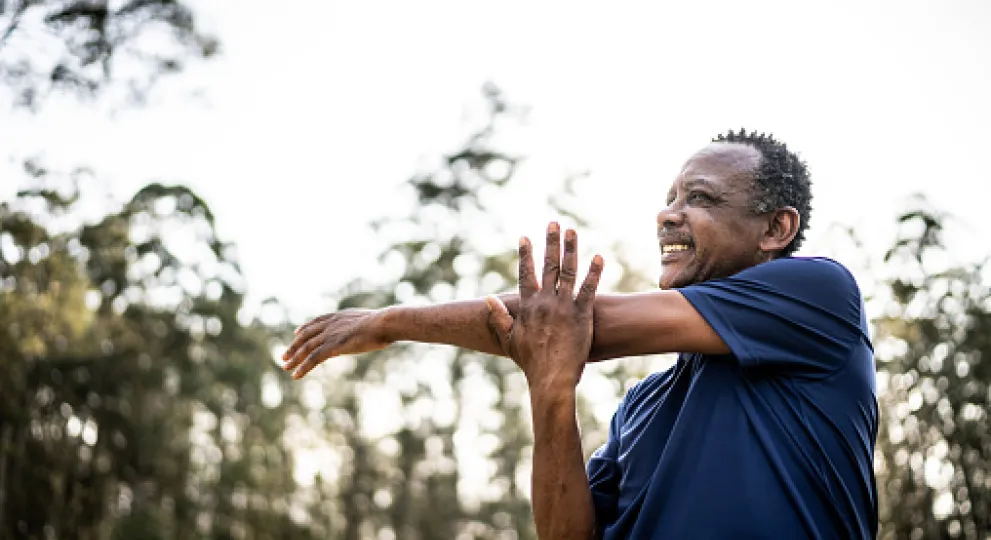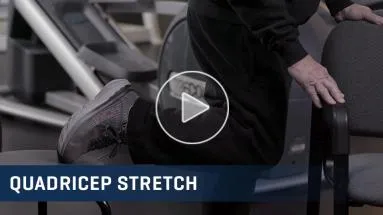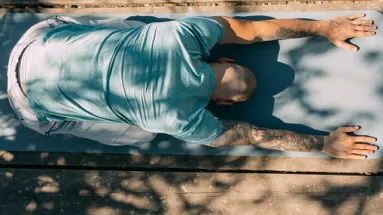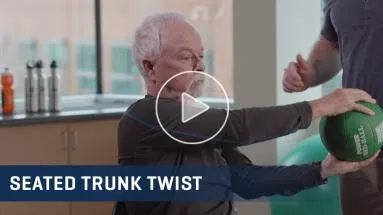Why movement matters — and tips for getting moving
Why movement matters — and tips for getting moving

If you’re living with cancer, physical activity matters.
Your exercise routine might look and feel different than it used to. So how can you create a routine that works for you?
Here are some specific ways movement may benefit people living with cancer, along with Microsteps you can consider to help you get moving — at your own pace. As always, consult with your care team for the exercise options that are best for you.
Why movement matters
Research shows that physical activity may lead to improvements in cancer-related quality of life in the following areas:
Fatigue
Lack of movement and exercise may make you feel fatigued if you’re living with cancer, especially if you’re used to being more active.
Sleep
Exercise and movement may improve sleep quality and even help you fall asleep faster.
Mental health
If you’re living with cancer, it’s common to experience anxiety, depression, and stress. It’s important to talk to your doctor if you’re experiencing a mental health challenge, and staying physically active may also have significant benefits.
Quality of life
Regular physical activity can help you maintain a sense of normalcy, positivity and independence.
Microsteps that can help with getting moving
Microsteps are small, science-backed steps you can consider taking to build new healthy habits.
Wherever you are on your cancer journey, and whatever your current relationship with movement is, you have an opportunity to get creative about movement. As always, consult with your care team for what would be best for you. These Microsteps may help you build a routine that works for you and even make it fun.
Doing a few gentle stretches before bedtime.
Stretching may help reduce cancer-related fatigue.
- Lie on your back with your head and shoulders supported by a pillow.
- Start with both arms at your sides. Then raise both arms forward and up over your head.
- Keep your arms near your ears, resting on your pillow.
- Hold this position for five seconds.
- Slowly raise your arms and return them to their starting position.
- Repeat ten times.
Taking a short walk.
Consider going outside in the fresh air and walking at a moderate pace, even for five minutes. You can consult with your care team about gradually building up to longer, faster walks.
Observing your breathing while you move.
Notice the rising and falling of your breath as you exercise, stretch or walk. Research shows that breathing exercises may be effective for reducing stress and improving mental health.
Adding movement through habit stacking.
Habit stacking is an expert-recommended strategy for creating a new healthy habit by “stacking” it onto an existing one. So you may try taking a walk while you call a friend, doing a few squats while you brush your teeth, or taking a stretch break after a shower. These are simple ways to add movement to your day without adding extra time.
Choosing a friend to be your movement buddy.
Living with cancer can be isolating, and there may be times that you feel alone. So you may want to try exercising with a friend. Whether you’re together in person or far away from each other, consider checking in to keep each other motivated.
Choosing an activity you enjoy.
Build your movement routine around what you want to do and what gives you joy, not what you think you should do. This eliminates friction and helps keep you motivated.
Developed with Thrive Global













